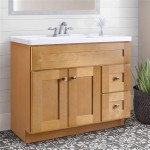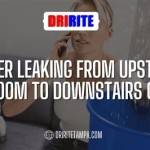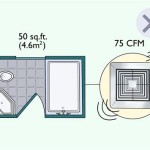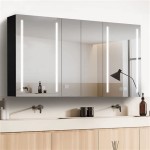In-Ceiling Speakers for Bathrooms: Considerations and Best Practices
Integrating audio into a bathroom environment has become increasingly popular, transforming the space into a multi-sensory haven. Among various audio solutions, in-ceiling speakers offer a discreet and efficient way to deliver sound without compromising valuable counter or wall space. However, selecting and installing in-ceiling speakers for bathrooms requires careful consideration due to the unique environmental challenges present in these spaces. This article will explore the key factors involved in choosing and implementing in-ceiling speakers specifically designed for bathroom use.
Understanding the Bathroom Environment and its Impact on Speaker Selection
Bathrooms, by their very nature, are characterized by high humidity levels, exposure to moisture, and fluctuating temperatures. These environmental factors can significantly impact the performance and longevity of audio equipment not designed to withstand such conditions. Standard speakers, typically used in living rooms or bedrooms, are unlikely to survive long-term exposure to bathroom conditions. The materials used in their construction, such as paper cones and untreated metal components, are susceptible to corrosion, warping, and degradation.
Humidity can penetrate speaker components, leading to short circuits, reduced sound quality, and ultimately, complete failure. Similarly, temperature changes can cause expansion and contraction of materials, potentially damaging delicate wiring and causing structural issues. Furthermore, the presence of cleaning chemicals and cleaning solutions can accelerate the deterioration of speaker components if they are not properly protected. Therefore, it is crucial to select in-ceiling speakers that are specifically designed and rated for bathroom use.
Moisture-resistant or waterproof in-ceiling speakers are constructed with materials engineered to withstand these harsh conditions. These materials include polymer cones, rubber surrounds, and treated metal components that resist corrosion and water damage. Many models also feature sealed enclosures to prevent moisture from penetrating the internal components. Speakers designed for marine environments often provide an excellent option for bathrooms due to their robust construction and ability to withstand constant exposure to moisture and salt spray.
IP (Ingress Protection) ratings are essential when selecting bathroom speakers. The IP rating indicates the level of protection the speaker enclosure provides against dust and water. A higher IP rating signifies a greater degree of protection. For bathroom installations, an IP rating of IP44 or higher is generally recommended. An IP44 rating means the speaker is protected against solid objects larger than 1mm and splashes of water from any direction. Higher ratings, such as IP65 or IP67, offer even greater protection against water jets and immersion, respectively. The selection of appropriate IP rating will depend on the specific location of the speaker within the bathroom and the level of moisture exposure anticipated.
Key Considerations for In-Ceiling Speaker Placement and Installation
The placement of in-ceiling speakers within a bathroom is crucial for achieving optimal sound quality and coverage. Careful consideration should be given to the size and layout of the bathroom, the listening area, and the presence of reflective surfaces.
In smaller bathrooms, a single in-ceiling speaker positioned centrally can often suffice. However, in larger bathrooms, two or more speakers may be required to provide even sound distribution. Stereo separation can be achieved by placing two speakers a reasonable distance apart, providing a more immersive listening experience. The distance between the speakers should be appropriate for the size of the room and the intended listening area.
It is generally advisable to avoid placing speakers directly above water sources such as showers or bathtubs, even if the speakers are waterproof. While the speakers may be designed to withstand moisture, direct and prolonged exposure to water can still potentially reduce their lifespan. Furthermore, installing speakers directly above water sources can create safety hazards due to the proximity of electrical components to water.
The height of the ceiling also plays a role in speaker placement. In bathrooms with high ceilings, angling the speakers downwards can help to direct the sound towards the listening area, improving clarity and reducing echo. Some in-ceiling speakers feature adjustable tweeters that allow for fine-tuning of the sound direction. Installing baffles or sound-absorbing materials around the speakers can also help to improve sound quality by reducing reflections and reverberation.
Professional installation is highly recommended for in-ceiling speakers in bathrooms. Proper installation ensures that the speakers are securely mounted, correctly wired, and properly sealed to prevent moisture ingress. A professional installer will also be able to assess the acoustic properties of the bathroom and recommend the optimal speaker placement and configuration. Furthermore, a qualified electrician should handle all electrical connections to ensure that the installation complies with local building codes and safety regulations.
Wiring also needs to be considered. Use CL3-rated speaker wire that is specifically designed for in-wall and in-ceiling installations. This type of wire is flame retardant and meets safety standards for concealed wiring applications. Ensure that the wiring is properly insulated and protected from moisture exposure. Consider using conduit or other protective measures to further safeguard the wiring. Running wiring through potentially wet areas requires careful planning and execution to minimize the risk of electrical hazards.
Selecting the Right Speaker Specifications and Amplification
Beyond moisture resistance, other speaker specifications are critical for optimal performance in a bathroom environment. These include power handling, frequency response, and impedance.
Power handling refers to the maximum amount of power the speaker can handle without distortion or damage. Selecting speakers with adequate power handling is essential for achieving the desired volume levels without compromising sound quality. The power requirements will depend on the size of the bathroom and the desired listening volume. For smaller bathrooms, speakers with lower power handling may suffice, while larger bathrooms may require speakers with higher power handling.
Frequency response describes the range of frequencies the speaker can reproduce accurately. A wider frequency response generally indicates better sound quality and a more complete listening experience. Look for speakers with a frequency response that covers the range of human hearing, typically 20 Hz to 20 kHz. While deep bass frequencies may not be as crucial in a bathroom environment as they are in other listening spaces, a balanced frequency response across the spectrum is still desirable.
Impedance refers to the electrical resistance of the speaker. Most in-ceiling speakers have an impedance of 8 ohms, which is compatible with most standard amplifiers. However, some speakers may have a lower impedance, such as 4 ohms. It is essential to ensure that the amplifier is compatible with the speaker impedance. Using an amplifier that is not compatible with the speaker impedance can lead to overheating, distortion, and potentially damage to both the amplifier and the speakers.
The amplifier used to power the in-ceiling speakers should also be carefully selected. It is recommended to use an amplifier that is designed for use in humid environments or that can be located outside the bathroom to avoid moisture exposure. Consider using a multi-zone amplifier that allows you to control the volume and source input for the bathroom speakers independently from other zones in your home. This provides greater flexibility and control over the audio system. Alternatively, a dedicated amplifier for the bathroom speakers can be installed outside the bathroom and controlled via a remote control or smartphone app.
Bluetooth connectivity is a convenient feature for bathroom speakers, allowing you to stream music directly from your smartphone or tablet. Look for speakers with built-in Bluetooth or use a Bluetooth receiver connected to the amplifier. This eliminates the need for physical connections and provides greater flexibility in terms of music sources. However, it is essential to ensure that the Bluetooth signal is strong enough to reach the speakers from your device. Consider using a Bluetooth extender if necessary.
Ultimately, selecting in-ceiling speakers for a bathroom requires a careful assessment of the environment, speaker placement, speaker specifications, and amplification. Understanding these key considerations will ensure a seamless integration of high-quality audio into the bathroom while prioritizing safety and longevity of the equipment.

Can I Put Speakers In My Bathroom K B Audio

Ceiling Speakers Everything To Know Before Install In 2025

Bathroom Ceiling Speakers Lithe Audio Ltd

Water Resistant Ceiling Speakers With Bluetooth For Ubuy

Best Ceiling Speakers For Your Bathroom The Ultimate Guide

Lithe Audio 06601 6 5 Waterproof Multi Room Wifi In Ceiling Speaker

Powerlink 6 Inch 10 Watt Wired In Flush Mount Ceiling Speakers For Bathroom Kitchen Home Theater Covered Porches White Pack Of 1 Metal Grill With Lmt At Best New Delhi Solar Pvt Ltd

Bathroom Ceiling Speakers Lithe Audio Ltd

Waterproof Bathroom Speakers Ceiling

Lithe Audio Wifi All In One Ip44 Multi Room Bathroom Ceiling Speaker Pair Master Passive







